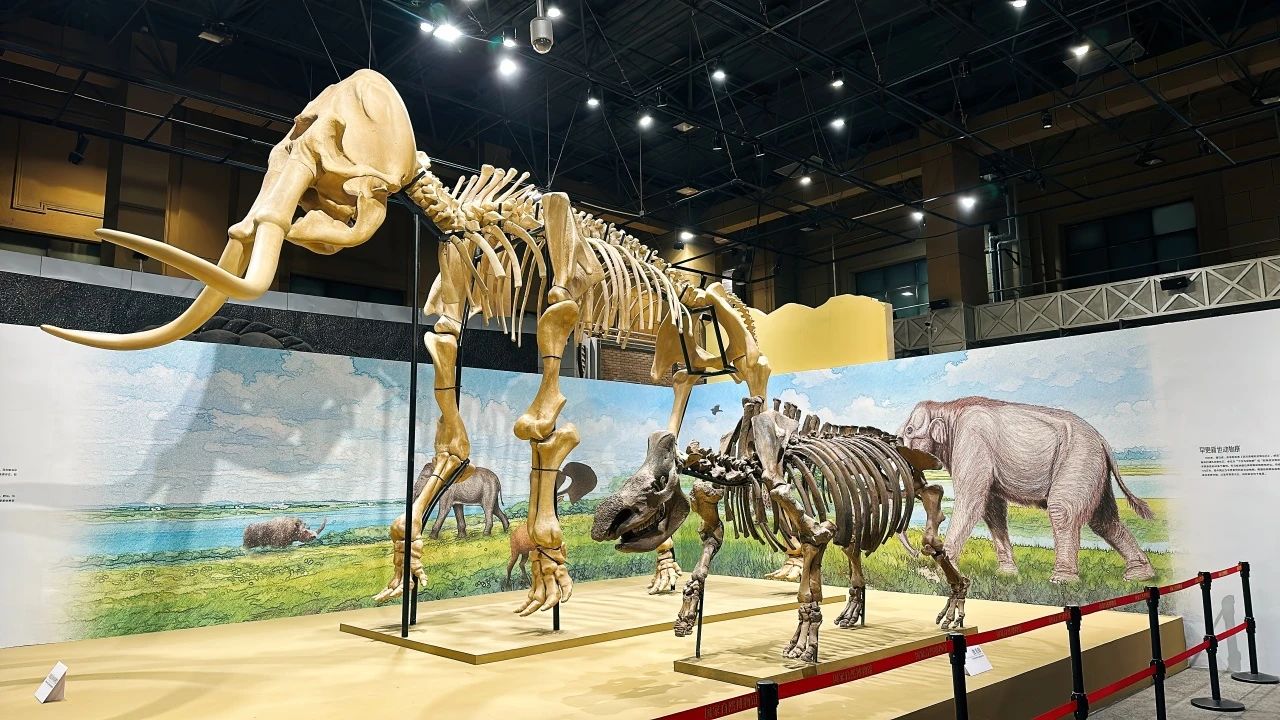
 0 Comment(s)
0 Comment(s) Print
Print E-mail China Daily, April 1, 2025
E-mail China Daily, April 1, 2025

During the ongoing exhibition, Radiance of the East: Million-Year Human Imprint in Nihewan, at the Natural History Museum of China in Beijing, visitors can follow fossil evidence to trace the earliest presence of humans in northeast Asia.
Opened on March 8 and running through to May 11, the event highlights the rich archaeological significance of the Nihewan site in North China's Hebei province. Jointly organized by the museum, the Hebei Nihewan Site Protection Committee, and the Zhangjiakou Association for Science and Technology, it aims to enhance public understanding of the region's geological and anthropological history.
Showcasing more than 200 artifacts, including stone tools, fossils and reconstructed site models, alongside multimedia presentations, the curators try to present the scientific knowledge of Nihewan's archaeology and paleontology, according to Wei Yi, an associate researcher at the Natural History Museum of China.
Divided into four sections, visitors can follow the timeline to explore the themes of human origins, ancient ecosystems, Paleolithic culture and the archaeological development of the site.
Located in Yangyuan county, Zhangjiakou, Hebei, Nihewan Basin is one of the country's earliest systematically excavated Paleolithic sites. The strata contains abundant fossils of ancient mammals, such as three-toed horses, woolly rhinoceroses, saber-toothed cats, giant deer and steppe mammoths, providing invaluable materials for studying the evolution of Cenozoic fauna in northern China. Nearly 400 sites have been identified, constructing a cultural sequence of ancient human evolution spanning nearly 2 million to 10,000 years.
Discovered in the early 1920s, the site contains well-known mammalian fauna and stone-tool artifacts in long sequences of sediments, making the region an attractive setting for geological, paleontological and archaeological exploration and research, according to the Geological Society of Hebei Province.
It has not only the earliest Majuangou site in northern China dating to 2 million years before the present, but also the Xujiayao site of the late Paleolithic period where human skulls and many forged spheroids were unearthed, as well as the Yujiagou site of the Paleolithic-Neolithic transition period where the earliest pottery fragments and many microliths were discovered.

Restored animal skeletons from Nihewan on show. [Photo courtesy of the Natural History Museum of China]
A standout exhibit is the reconstructed scene from the Majuangou site, where evidence of human activity dating back 1.66 million years was discovered.
"This is where the 'first meal of Eastern humans' took place," Wei explains.
"One scraper was found in direct contact with a rib fossil, bearing clear signs of impact and scraping, reflecting scenes of ancient humans hunting, dismembering and sharing mammoth meat," she adds.
The exhibition also introduces the fossilized remains from the Houjiayao-Xujiayao site, representing 16 individuals across various life stages, from children to the elderly. Nearby, three round stone balls are exhibited. "Stone balls are the most distinctive tools from this site, with thousands discovered," Wei says.
The site yielded more than 4,000 horse tooth fossils, leading experts to speculate that the stone balls were specialized tools for hunting wild horses.
"Ancient humans likely tied ropes around the stone balls to create bolas, which they threw to strike animals' bodies or heads," she explains.
Another groundbreaking discovery that Wei doesn't want visitors to miss is the evidence of a culture that processed ochre, which is used to make pigments, discovered at the Xiamabei, a 40,000-year-old archaeological site in Nihewan.
Small pieces of hematite and grinding tools are displayed together in the exhibition.
"This discovery pushes the history of hematite pigment use in East Asia back to 40,000 years ago. Since pigments were likely used for body decoration, it suggests that humans had developed a sense of aesthetics by this period," Wei says.
Additionally, experts found plant fiber traces on the surfaces of some stone flakes, indicating that ancient humans may have bound small stone flakes to create composite tools, reflecting the increasing complexity of their technology and behavior.
Over the past century, archaeological discoveries at Nihewan have pushed the timeline of human origins in China and East Asia back to approximately 1.7 million years ago.
With the launch of the project of chasing the human origins in Nihewan by the provincial government in Hebei, further archaeological revelations are anticipated.
Go to Forum >>0 Comment(s)